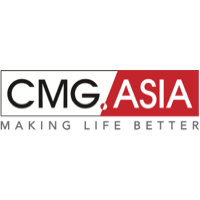
Continuous improvement is not just a simple concept; it is a powerful management philosophy that brings about small yet practical enhancements to the quality and performance of organizations, products, and services. Rather than waiting for significant changes, continuous improvement encourages organizations to implement subtle yet ongoing changes, enabling them to quickly adapt to new challenges and optimize operations.
Why is this important? It is crucial because it helps businesses not only maintain competitiveness in the market but also enhance customer satisfaction through relentless quality improvements in products and services. Moreover, continuous improvement promotes sustainable development by optimizing resources and minimizing waste. In this article, you will explore the concept of continuous improvement, understand its importance to businesses, and discover the methods and tools that support this process. Join us in discovering how continuous improvement can be the key to your business’s strong and sustainable growth!
Concepts of Continuous Improvement
Continuous improvement is a journey rooted in production and quality management methods from Japan after World War II. Among the notable methods, Kaizen has become a symbol of this philosophy, developed by Masaaki Imai in the 1980s. Kaizen, which means “continuous improvement,” encourages small but frequent changes to enhance operational efficiency. From Kaizen, other methods such as Lean and Six Sigma emerged, aiming to optimize production processes and reduce waste.
1. Core principles

• Kaizen: Focusing on small but continuous improvements, Kaizen encourages every employee in the organization to participate and take responsibility for proposing improvement ideas. The involvement of everyone is the key to success.
• Lean: Aiming to eliminate waste in production processes and increase value for customers, Lean uses tools like 5S, Kanban, and Just-In-Time to improve processes and enhance efficiency.
• Six Sigma: Concentrating on reducing variability in production processes and improving product quality, Six Sigma applies statistical and analytical tools to identify and eliminate causes of defects or variability.
2. Benefits of Continuous improvement
• Cost Reduction: By eliminating waste and optimizing processes, businesses can reduce production and operational costs, enhancing competitiveness and improving profits.
• Quality Enhancement: Continuous improvement ensures that products and services consistently meet the highest quality standards, increasing customer satisfaction and building a strong, reputable brand.
• Productivity Increase: Continuously improved processes enhance employee and machinery productivity, allowing businesses to produce more with the same resources, and optimizing operations.
• Customer Satisfaction: With high-quality products and excellent services, customer satisfaction and loyalty are enhanced. Satisfied customers are more likely to return and recommend the business to others, facilitating market expansion and increasing revenue.
• Understanding and applying continuous improvement methods helps businesses not only maintain stability but also create a solid foundation for sustainable growth in a highly competitive environment.
Elements in the Continuous Improvement Process

Continuous improvement is an ongoing process that helps businesses develop sustainably and achieve higher efficiency in all activities. This process includes several key steps aimed at identifying and addressing limitations in workflows, optimizing performance, and enhancing product and service quality. Here are the main elements in the continuous improvement process:
• Identifying Bottlenecks: This is the first step in the continuous improvement process, requiring businesses to find activities that hinder development. Bottlenecks may include inefficient workflows, time-wasting, or generating errors. Accurately identifying these issues helps businesses prioritize addressing critical problems while ensuring focused and effective improvements. For example, a production process with unnecessary steps or errors needs immediate review and adjustment.
• Experimenting and Learning: After identifying weaknesses, businesses need to experiment with new ideas to address issues. The experimentation process allows for assessing the feasibility of solutions before widespread implementation. Moreover, learning from both successes and failures during experimentation is crucial for refining and perfecting new methods. Each experiment provides valuable insights that help optimize future strategies.
• Process Optimization: After experimenting and learning, the next step is to improve workflows to maximize efficiency. This process includes eliminating unnecessary steps, applying advanced technology, or enhancing existing tools. The goal is to minimize costs and processing times while increasing productivity and the quality of products or services. For instance, automating certain stages of the process can help reduce errors and improve accuracy.
• Training and Developing Human Resources: Continuous improvement relies not only on processes but also on employee development. Regular training helps staff update their skills and knowledge, ensuring they can perform their jobs effectively. A capable workforce not only enhances operational efficiency but also positively contributes to the creative process, generating new ideas and solutions to address issues. Investing in people is a crucial factor in ensuring the long-term success of improvement efforts.
Tools for Supporting Continuous Improvement: Discovering the Secrets of Success

• Statistical Tools:
√ Pareto Chart: One of the most powerful tools for identifying the most critical issues, the Pareto chart visualizes the percentage of various factors. Through this analysis, you can easily focus on the causes that have the greatest impact on operational efficiency.
√ Control Chart: This tool is a reliable “assistant” for monitoring processes and determining their stability. By detecting abnormalities early, control charts allow you to take timely corrective actions, ensuring that the process runs smoothly.
√ Histogram: With the ability to represent the frequency distribution of a dataset, histograms help you better understand the distribution and variability of the data, enabling informed decision-making.
• Quality Management Tools:
√ 5S: This method, originating from Japan, includes the steps of Seiri (Sorting), Seiton (Setting in Order), Seiso (Shining), Seiketsu (Standardizing), and Shitsuke (Sustaining). 5S not only improves the working environment but also enhances productivity and effectively reduces waste.
√ TPM (Total Productive Maintenance): This is a comprehensive maintenance method focused on optimizing equipment performance and production processes. With TPM, you can minimize downtime and improve product quality, contributing to sustainable business growth.
• Problem-Solving Tools:
√ 5 Whys: This method uses the question “Why?” five times to delve into the root causes of a problem. The 5 Whys technique helps you analyze and find comprehensive solutions to the challenges you face.
√ Ishikawa (Fishbone Diagram): This visual tool helps identify and categorize the causes of a problem. By grouping causes into major and minor categories, you can easily pinpoint the factors that need improvement.
• Supporting Software:
√ Project Management Software: Applications like Trello, Asana, and Microsoft Project not only help track project progress but also effectively assign tasks and manage resources, enhancing synchronization in work.
√ Data Analysis Software: With tools like Tableau, Power BI, and Google Data Studio, you can collect, analyze, and visualize data, allowing you to make decisions based on real metrics.
Applying these tools will enable businesses to implement continuous improvement effectively, enhancing the quality of products and services while optimizing workflows. Continuous improvement not only helps businesses maintain stability but also promotes long-term sustainable growth. Let’s explore and turn continuous improvement into a competitive advantage for your business!
Case Study: Continuous Improvement at TechPro Electronics Manufacturing Company

• Background: TechPro, a leading electronics manufacturing company in Hanoi, Vietnam, faced significant challenges in maintaining productivity and product quality. Amidst fierce competition and rising market demands, TechPro recognized the urgent need to take action to sustain its market position.
• Objective: To enhance product quality, increase productivity, and optimize workflows, the company decided to implement continuous improvement methods. The ultimate goal was not only to boost revenue but also to improve profitability.
• Implementation Steps:
√ Identifying Problems: TechPro began by analyzing production data and gathering customer feedback to pinpoint key issues, including inconsistent product quality, prolonged delivery times, and inefficient production processes.
√ Applying Kaizen Method: The company implemented the Kaizen method, encouraging all employees to participate in proposing small, continuous improvement ideas. These ideas were tested and adopted if effective.
√ Utilizing Statistical Tools: Pareto charts were used to analyze and identify the root causes of the problems. Additionally, control charts and histograms helped monitor processes and detect abnormalities early.
√ Applying Lean Principles: TechPro adopted Lean principles such as 5S (Sorting, Setting in Order, Shining, Standardizing, and Sustaining) to improve the work environment and reduce waste. Kanban and Just-In-Time tools were used to optimize the production process.
√ Problem-Solving with the 5 Whys Method: The 5 Whys method was applied to identify the root causes of the identified issues, allowing for deeper analysis and comprehensive problem-solving.
√ Implementing Six Sigma: Finally, TechPro deployed the Six Sigma method to minimize variability in production processes and enhance product quality. The Ishikawa (Fishbone) diagram was used to categorize and identify the causes of problems.
• Results: Within just one year of implementing continuous improvement, TechPro achieved significant successes:
√ Revenue Increase: The company’s revenue grew by 15% compared to the previous year, demonstrating the effectiveness of the improvements.
√ Improved Product Quality: The return rate dropped sharply from 8% to 3%, indicating that customers increasingly accepted the products.
√ Increased Productivity: Delivery times decreased from 7 days to 3 days, and production productivity increased by 20%, enabling the company to operate more efficiently.
√ Customer Satisfaction: Surveys showed that 90% of customers were satisfied with the company’s products and services, enhancing its reputation and fostering long-term growth.
• Conclusion: TechPro has demonstrated that adopting continuous improvement methods not only enhances product and service quality but also increases customer satisfaction and drives revenue growth. This is a vivid testament to the power of continuous improvement in building a foundation for sustainable development and effective competition in the market. TechPro’s journey serves as a valuable lesson for all businesses in this relentless race!
Small Tips for Continuous Improvement
Continuous improvement is key to sustainable business growth and maintaining competitiveness in the market. Here are some important tips for effectively implementing continuous improvement:
Set SMART Goals

• Specific: Goals need to be clear and specific for easy direction. Instead of saying “increase revenue,” a more specific goal would be “increase revenue by 10% in the next quarter.” This helps everyone in the organization understand the goals and the steps needed to achieve them.
• Measurable: Goals must be measurable by specific metrics. For example, increasing revenue by 10% or reducing operating costs by 15%. This allows tracking progress and objectively assessing effectiveness, ensuring the business is on the right track.
• Achievable: Goals should be realistic and attainable based on current resources. Setting goals too high or misaligned will create pressure and disappointment, leaving employees feeling demotivated.
• Relevant: Goals must align with the overall strategy and objectives of the business. Ensure that each smaller goal contributes to a larger goal, guiding the entire organization in the right direction.
• Time-bound: Goals need a specific deadline for completion. This timeframe creates motivation and positive pressure to meet deadlines while helping the business easily evaluate results after each phase.
Utilize the PDCA Cycle

• Plan: Before implementing any improvements, a detailed plan must be created. This includes defining objectives, strategies, necessary resources, and potential risks. A good plan will facilitate a smooth implementation process and minimize errors.
• Do: After planning, the business needs to deploy and closely monitor the implementation process. Record initial results to assess whether the plan is on track.
• Check: After completing the implementation phase, check and evaluate the results. Compare actual results with the set goals to determine if the objectives have been met and identify areas needing improvement.
• Act: Based on the evaluation results, make necessary adjustments. If results fall short of expectations, change the plan or improve processes to achieve better outcomes in future implementations.
Foster a Culture of Learning and Innovation
Encourage employees to propose new ideas and experiment with creative solutions. The business should create a working environment that fosters creativity and does not fear failure, as valuable lessons can be learned from setbacks.
Organize regular training sessions, workshops, and team activities to provide employees with opportunities to learn, share knowledge, and gain experience. This helps the team stay updated with new trends, allowing them to contribute many improvement ideas to the business.
Establish effective internal communication channels so employees can easily share ideas and receive feedback from colleagues and superiors. Strong interdepartmental relationships will promote collaboration and innovation within the business.
Use Data to Make Decisions
Base important decisions on actual data. Data provides an objective view, avoiding emotional judgments when assessing situations and determining the next steps.
Utilize analytical and reporting tools to collect, process, and evaluate data. These tools enable businesses to easily track activity results and make timely adjustments if necessary.
Continuously update and monitor data to ensure decisions are always based on the latest and most accurate information. This allows businesses to make quick decisions, avoiding unnecessary risks.
These small tips, when applied correctly, will help businesses maintain a continuous improvement process, enhancing operational efficiency and creating a solid foundation for long-term sustainable growth.
Common Challenges and Solutions in Continuous Improvement
1. Resistance from Employees

Continuous improvement often faces resistance from employees due to concerns about change or a lack of understanding of the benefits of improvement initiatives. They may feel uncomfortable trying new processes or worry about increased workloads.
Solution: Organize training sessions and workshops to introduce the benefits of continuous improvement, helping employees see its value. Encourage their participation by listening to their opinions and creating an open working environment. Establish reward programs to recognize and motivate employee contributions.
2. Lack of Resources
Continuous improvement requires certain resources, such as finances, manpower, and technology. A shortage of resources can slow down improvement progress or prevent businesses from implementing planned initiatives.
Solution: Identify key areas that need improvement and prioritize resource allocation for these projects. Leverage technology to reduce workload for employees and collaborate with partners to share resources and knowledge.
3. Lack of Time
Businesses often face pressure to complete daily tasks, making it difficult to allocate time for improvement activities.
Solution: Develop a detailed plan for improvement activities, including implementation schedules and clear task assignments. Integrate improvement into daily work so that employees can seek and propose enhancements without disrupting current tasks. Implement quick improvement methods such as Kaizen, Lean, or Agile to achieve small improvements without requiring extensive time and resources.
Continuous improvement is an essential process that helps businesses maintain stability and sustainable growth. By applying principles like Kaizen, Lean, and Six Sigma, companies can reduce costs, enhance product quality, increase productivity, and improve customer satisfaction. To get started, identify current bottlenecks, implement improvement methods, and encourage employee involvement in the process. Remember, continuous improvement is not a destination but a journey; start with small steps to achieve significant success in the future.
CMG.ASIA proudly stands as one of the leading consulting firms in Southeast Asia, specializing in business, management, financial consulting, and succession planning. With over 20 years of experience in the field, we are committed to providing optimal solutions and dedicated support to help your business grow sustainably. Our team of experts understands the local market and is always ready to accompany you on your journey to success. If you are looking for a reliable partner to enhance your business efficiency, please contact us!






